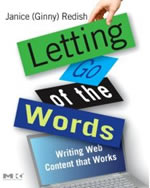Jacobs Media’s Tim Davis points to some great resources for doing "write" by your Web audience:
![]() Now that everyone’s firmly focused on Internet revenue, and specifically, station websites, I wanted to give you some of my perspective. As we know, radio station Web sites are often a work in progress, and redesigns are ongoing.
Now that everyone’s firmly focused on Internet revenue, and specifically, station websites, I wanted to give you some of my perspective. As we know, radio station Web sites are often a work in progress, and redesigns are ongoing.
We have conducted a number of "usability studies" over the past few years, so when a new Poynter Institute Eye Track study was released – or at least a few bite-size chunks – it caught my attention. The preliminary results are in from their latest EyeTrack study, which measures eyeball movement on websites to see where people are really looking when they load a page.
While focused on print media in specific, and the differences between how people read Newspapers and Magazines in print versus online, the clear outcome is that people read differently online – something we as content providers have to do a better job of addressing in our websites. Some key findings:
- In print, about 3/4ths of the respondents were "methodical" readers versus scanners – however online, this drops and the two ways of reading are 50/50.
- Alternative ways of presenting large amounts of text – Q&As, in bullet form, as sidebars, etc. help people pickup the details of what you’re presenting better. The next time you have information about a promotion, contest, or even concert, rather than providing the details ONLY as a narrative in a few paragraphs, provide the key details in a FAQ or bullet format – you’ll get better retention on the pertinent details.
- We’re used to "big headlines" and photos doing the trick to sell newspapers and even our own radio station website’s key features – and while they do get looked at first – nav bars and teasers are the ones that get "clicks"
- In terms of photos you use on your site consider that photos of real people doing things in real time get much more attention than staged or studio photographs. The next time you present a band in the studio – or even for pictures of your jocks – don’t post static, staged images and mugshots. Go for action pictures of activities.
- Most importantly, people are reading more than ever before – especially online. While they may be "scanning" versus reading entire articles and features people are taking in much more information than they did previously. It’s never been more important than now to write correctly for the web.
 With that in mind, there’s a new book that should be required reading for anyone writing for the web: Letting Go Of The Words by Ginny Redish. It’s an easy and pleasant read – well worth the time. You can download a couple of free chapters from her site. Much like the Poynter Eyetrack material, her focus is on usability and how people interact with your material. A quote from the book’s forward (written by usability guru Steven Krug) sums it up very nicely. And take note that he makes these points as bullets!
With that in mind, there’s a new book that should be required reading for anyone writing for the web: Letting Go Of The Words by Ginny Redish. It’s an easy and pleasant read – well worth the time. You can download a couple of free chapters from her site. Much like the Poynter Eyetrack material, her focus is on usability and how people interact with your material. A quote from the book’s forward (written by usability guru Steven Krug) sums it up very nicely. And take note that he makes these points as bullets!
- "Most of the Web is about words. The pictures, video, and animation are great, but the words do almost all of the heavy lifting."
- "Very few of the millions of sites out there can afford a full time writer. As a result, most of the people (like you, perhaps) who have to write all those words aren’t professional writers. They (you) need some help."
- "And even for most professional writers, writing for the Web is very different from what they know. They could use some expert help, too."
Excellent points all, and the free chapters alone will get you moving in the right direction – and thinking a bit differently about how you present the written word on the web.
Between the latest information from Poynter and this new book from Redish we’ve got two very powerful resources to help us better interact and engage our audiences. It would be shameful not to spend the time and effort to take this information in.
- Media And Technology In 2025: Believe It Or Not! - April 18, 2025
- In Radio, You Just Never Know - April 17, 2025
- The Secret To Making A Great Podcast (And Great Radio) - April 16, 2025




Leave a Reply